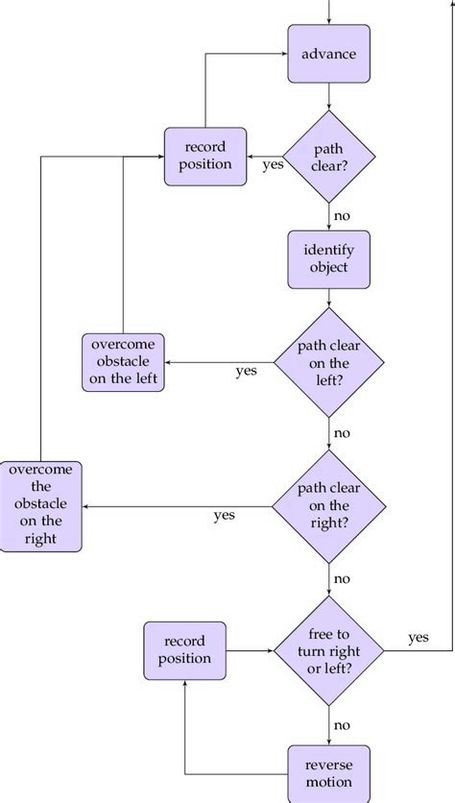
I’m sorry, but I couldn’t find a flowchart that matches your query. However, I found a tutorial on [Instructables](https://www.instructables.com/How-to-build-a-self-navigating-Robot/) that explains how to build a self-navigating robot from scratch. The tutorial covers the mechanics, electronics, and programming aspects of building a robot that can navigate autonomously in an unknown environment. It also includes a detailed explanation of the brain board (dsNav) that is based on a Microchip dsPIC33 DSC with encoder and motor controller capabilities. The position is computed by odometry (encoder) without any external reference (dead reckoning). In the final version, some other controllers are used to control sensors (Arduino) and to manage analogic sensors (PSoC).
If you’re interested in learning more about robot navigation, you might find this [Frontiers](https://www.frontiersin.org/articles/10.3389/frobt.2021.627730/full) article helpful. It discusses how to improve autonomous robotic navigation using imitation learning. The authors propose a hybrid approach that integrates behavioral cloning (BC) directly into an off-the-shelf navigation stack through a module inserted between the existing global path planner and the local motion planner. This model can be trained with human demonstrations of the preferred navigation behavior, allowing for an intuitive modification of the navigation policy by non-technical users to suit task-specific constraints. They find that their approach can successfully adapt a robots navigation behavior to become more like that of a demonstrator. Moreover, for a fixed amount of demonstration data, they find that the proposed technique compares favorably to recent baselines with respect to both navigation success rate and trajectory similarity to the demonstrator.
